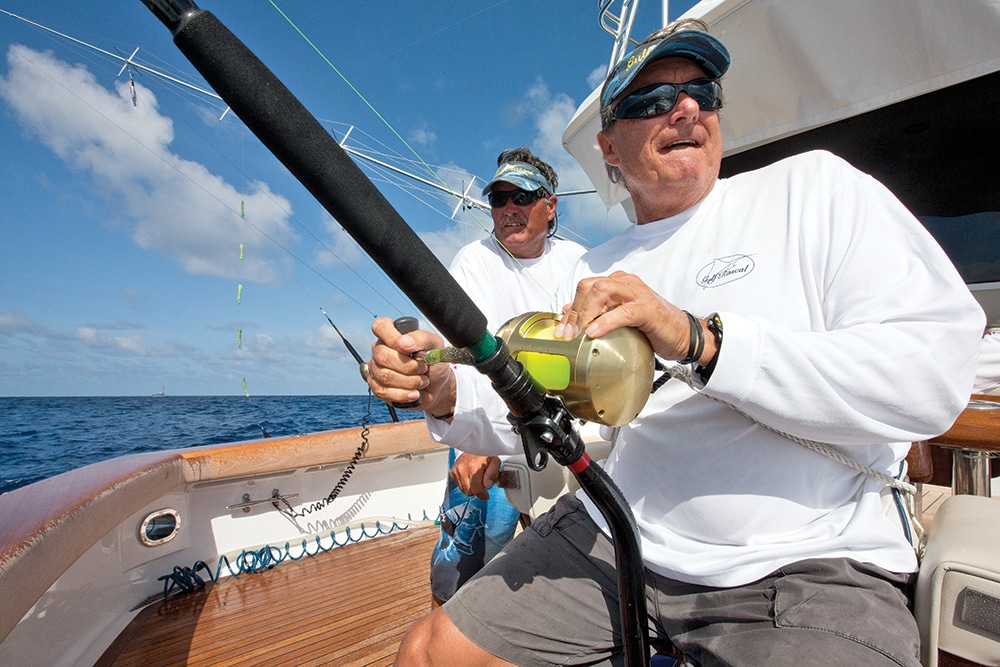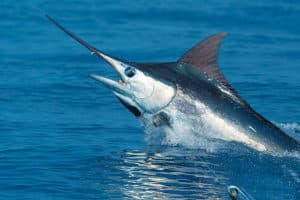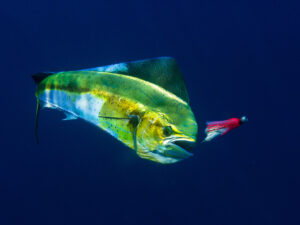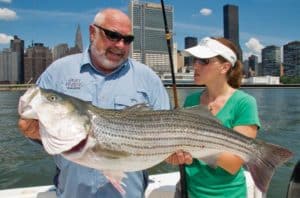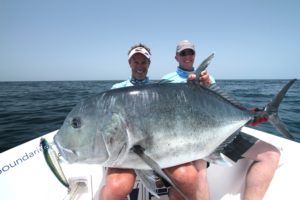Who knew? Ask a dozen random East Coast billfish hunters where they would likely find the next grander blue marlin off the Atlantic seaboard, and their answers would probably include the Bahamas, the Florida Keys, North Carolina’s Outer Banks or Ocean City, Maryland. Few would give credence to Long Island, New York, as a veritable big blue marlin paradise. Well, surprise!
The coastal and canyon waters off Long Island’s south shore are, in fact, for a brief 10-week period each year, one of the most prolific blue marlin hot spots in the western north Atlantic. That’s not urban legend but documented fact.
So let’s head offshore to find out where, when and why Long Island may be the home of the next grander blue marlin.
Science Lesson
To better understand why blue marlin find these coastal waters so attractive, I went to one source who could explain the science of it all. Few experts are better qualified than Dr. Mitch Roffer, president of Roffer’s Ocean Fishing Forecasting Service (roffs.com) and adjunct professor in the department of marine biology at the Florida Institute of Technology.
According to Roffer: “The key to finding big blue marlin is to locate the clockwise eddies that form along the northern side of the Gulf Stream and work their way inshore, getting trapped along the walls and drop-offs of the various northeast canyons that are prevalent in the New York Bight and New England areas.”
These pinch-off eddies effectively trap blue water and the migratory fish that are using the Gulf Stream to aid their seasonal migration movements. The best conditions for productive fishing action are where the combination of Gulf Stream and continental-shelf waters mixes to form blue-green water. This brings together baitfish from the continental shelf and migratory marlin that leave the Gulf Stream to feed. The best location to find this phenomenon is where the current pushes into structure in one specific location for three to seven days. This allows enough time for the ocean’s convergent forces to concentrate phytoplankton, then zooplankton, and then baitfish such as flyingfish, squid and anchovies.
“If the water’s too turbid, visual-feeding billfish will not be successful in finding their prey, and they won’t stay in the area,” says Roffer. “Water that’s too clear indicates there’s no substantial abundance of plankton or baitfish.”
For surface trolling, blue marlin prefer waters from 72 to 78 degrees F, he says. When water temps get above 78 degrees, the fish simply swim deeper in the water column near the thermocline. Favorite forage baits for marlin in the Northeast are squid, small mahi, tinker mackerel, skipjack and other small tunas (such as yellowfin, albacore and false albacore, which are called “little tunny” in the Northeast).
Time of the Season
Looking back at my detailed offshore fishing logs starting from 1980, the optimum 10-week period to target blue marlin in both near and offshore canyon waters is from the middle of July through the end of September, when the dreaded alphabet-storm season is in full swing.
One positive indicator that big blue marlin might be in town coincides with the arrival of dorado in Long Island’s offshore waters. The first mahi usually show up in shark fishermen’s chum slicks somewhere between July 4 and mid-July, when inshore shelf waters warm up to 73 degrees. I have taken dozens of dorado from lobster-pot buoys dotting the Hudson Canyon, the Dip, and Block Canyon, including the near-coastal weather buoys, that all sported fresh slash marks on their sides from being battered by big blue marlin.
Not coincidentally, many reports of monster marlin catches and sad tales about ones that got away take place the last two weeks of July. One eventful day back on July 20, 1986, put Long Island on the blue-marlin map and made everyone take notice.
Big-Game Hunters
Capt. Harry Clemenz of Montauk, New York, is no stranger to the offshore scene. He was one of the first canyon explorers in the early 1960s who discovered the prodigious blue-water fishery south of Long Island. Clemenz rocked the fishing world with an incredible New York state record that still stands today as the largest blue marlin caught off the East Coast of the continental U.S. The 1,174½-pound behemoth was bested by 19-year-old angler Bill Sweedler Jr., under Clemenz’s command, on July 20, 1986, after a five-hour slugfest. Now in his mid-80s and still a Montauk legend, “Clem” shared his blue marlin moment with me.
“I was running the 46-Bertram Tempo for Bill Sweedler Sr. back then. We set up this offshore trip around a favorable weather window,” Clemenz says. “At the last minute, Bill had to commit to a golf outing, but his two boys and a few friends were looking forward to the trip offshore to the Block Canyon Fish Tails, so we left Montauk in the dark and arrived at the 100-fathom line just before daybreak.
“We started trolling south of the Tails. I was working a 68-to-72-degree temperature break near the 500-fathom Lobster Claw when a big blue came into our spread and approached a modified blue-and-white Hakuna Hawaiian lure. This lure was dancing on the third wave, attached to a Penn 80 on a flat-line clip, when the marlin struck it with a vengeance.
“There were a series of surface jumps, and then the big girl sounded in 2,500 feet of water,” says Clemenz. “Bill Jr. got in the chair and I ran the boat, trying to get some line back on the reel. It was a down-and-dirty fight, but after two hours, the rod suddenly snapped in half. At that point, I jumped down from the flybridge and stripped some line from the Penn 80 International before the marlin could go on another run.”
Acting decisively, Clemenz removed some Dacron from a Penn 130 outfit to make room for the 80-pound line that was already in the water. He connected the two lines with a blood knot, and now Sweedler was fighting the marlin on the 130 outfit. Three grueling hours later, they were able to get the blue up on the surface, and it started coming to the boat backward — it was tail-wrapped!
“Backing down toward the billfish, we were able to get a tail rope around the big girl, but then the fun started,” Clemenz says. “How were we going to get her on board for the ride back to Montauk?”
Fortunately, the Tempo had a tuna door in the stern. When they returned to the Montauk Marine Basin, the fish measured 15 feet, 4 inches in length with a 7-foot-9-inch girth. Scientists from the Woods Hole Oceanographic Institute who examined the billfish determined it was a 30-year-old female. This fish of a lifetime put Montauk on the map as a prime spot for catching big blue marlin.
Always Be Ready
Clem’s story isn’t the only tale of big blues off Long Island; plenty of other oversize billfish have been tagged and released, or lost after heartbreaking battles. In July 2011, Dr. Lou Pastore of the Moriches Anglers Club had the good fortune of catching and releasing his sixth blue marlin while fishing Long Island’s offshore waters. His most recent catch, an estimated 850-pound female, was caught just south of the 100-fathom line near the Dip, the confluence of two canyons (Ryan and McMaster, recently named by the U.S. Geological Survey) positioned between the Hudson and Block canyons. The big blue hit a green Moriches Mauler lure and was angled boat-side on a 50W outfit in only two hours. It was tagged, revived and released.
Clem’s record blue surpassed a pair of 940-pounders caught off Long Island back in 1981 and 1984 respectively. Pete Fisher, an East Coast marlin fanatic from the mid-’80s, boated an 835-pounder in 1985 and an 800-pounder that was weighed at the Montauk scales a week before the Tempo’s catch.
But big blues are not limited to deep canyon waters, and will venture inshore to 20- and 30-fathom depths to seek their favorite forage. Last year, Capt. Nick Savene from Oceanside, New York, trolled up an estimated 550-pound blue marlin south of the wreck of the British tanker Coimbra. His angler fought and released the billfish in 180 feet of water south of Shinnecock, New York. Back in the late ’90s, Capt. Billy Martin and “Mako” Mike Townsend lost an even larger blue in only 17 fathoms, southeast of Fire Island, after a punishing nine-hour fight. The moral of these stories is that if you have 73-degree water off Long Island with an abundance of forage like dorado, skippies and other small baitfish in the area, a hungry marlin can make an appearance without warning. If you fish the Island’s fertile offshore waters and get the chance to tackle a big blue marlin, consider tagging and releasing it to fight another day.
Best of Both Worlds
Most big blue marlin caught in Long Island waters are hooked accidentally while fishermen troll for tuna. With seven species of tunas in the neighborhood (bluefin, yellowfin, albacore, bigeye, skipjack, Atlantic bonito and little tunny), someone is usually around and always hungry. This fact is a reason that many marlin are broken off by shocked tuna anglers.
If you scale down your tackle to catch 10- to 40-pound tuna, and a big blue comes calling, in all likelihood your small outfit will fail. If you run heavier tackle for that once-in-a-lifetime grander marlin, that takes some of the sport and enjoyment out of catching smaller tunas.
I have solved that problem by going with reels capable of heavy, 25- to 40-pound-strike drag settings, such as the Penn 30 and 50 VSX reels, and filling them with braided line. They are relatively lightweight, and hold impressive quantities of line (650 yards of 100-pound braid for the 30; 875 yards of 130-pound braid for the 50) that will come in handy if and when that big blue hits a lure. Attach the reel to a 6-foot (50- to 130-pound) stand-up stick of your preference and a heavy-duty harness-and-belt setup (like those made by Braid or AFTCO).
Many marlin specialists will eschew this “mouse tackle,” and go right to the big guns in the form of bent-butt 80Ws and 130s. If this heavy-duty gear is your preferred route, you’ll need a quality fighting chair and footrest, along with an adjustable bucket harness, all of which can set you back $8,000 or more.
When it comes to lures, usually bigger is better to attract big blues into your spread. Hawaiian swimmers such as Black Bart, Joe Yee, Melton and Polu Kai catch marlin with great consistency worldwide. You’ll need larger 11/0 and 12/0 hooks to rig these lures. Since all of the 800- to 1,000-pound blue marlin you’ll meet have significant mass and length, a 20-foot leader is a must, which will require your leader man to really have his act together when bringing any large billfish boat-side.
I’ve had a number of run-ins with blue marlin off Long Island during my charter operations. They are definitely here and ready to rumble.
About the Author
Capt. John N. Raguso runs MarCeeJay Sport Fishing (marceejay.com) out of Long Island, New York. He has published more than 3,000 articles since the mid-’80s on topics including saltwater fishing, boating, marine electronics, guns and ammo.
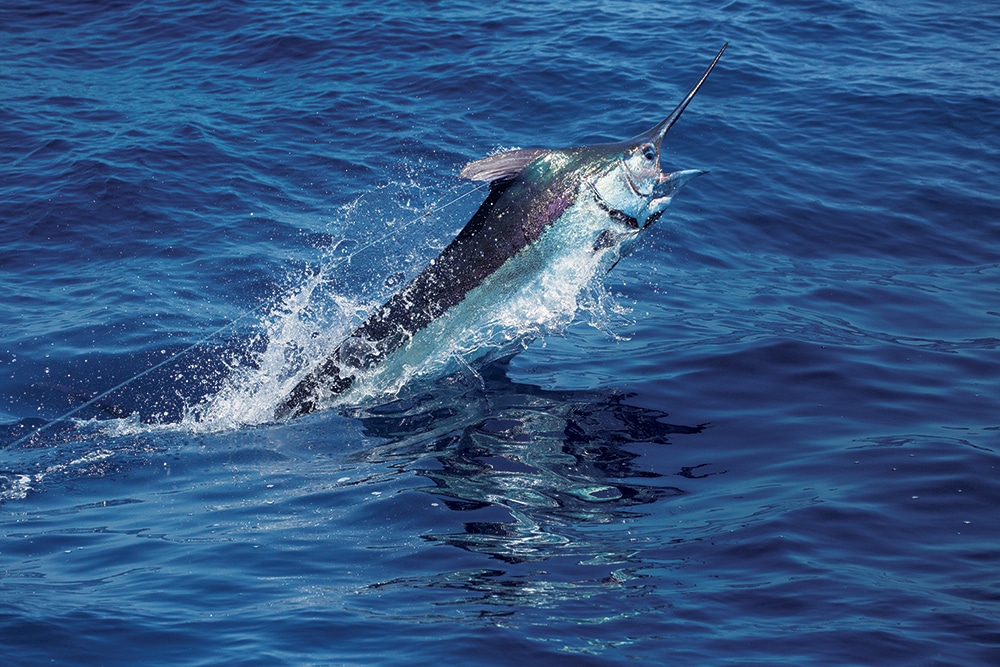
Long Island Blues
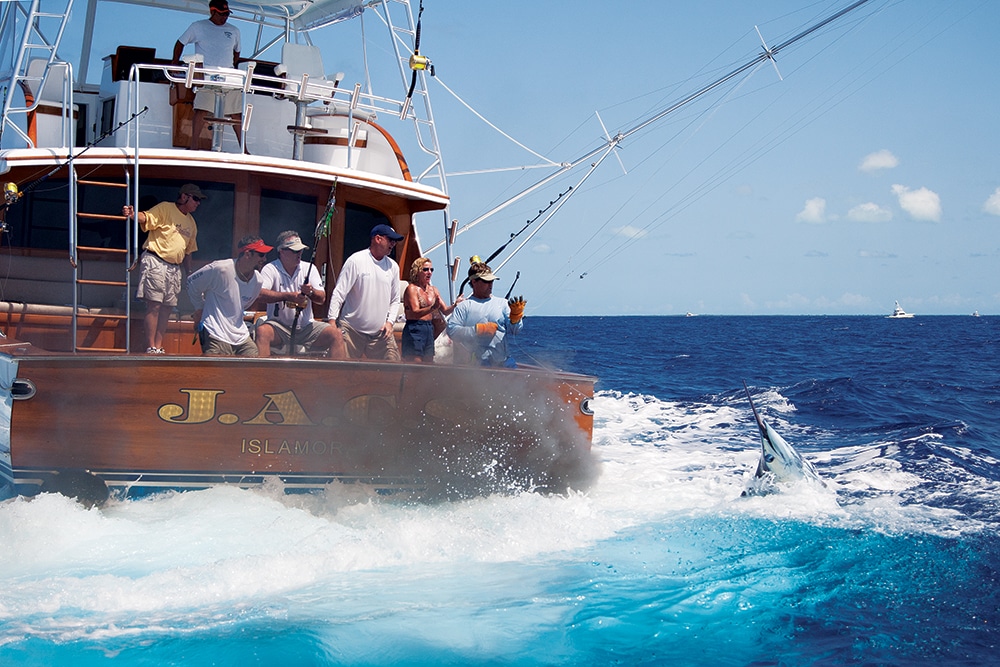
Long Island Blues
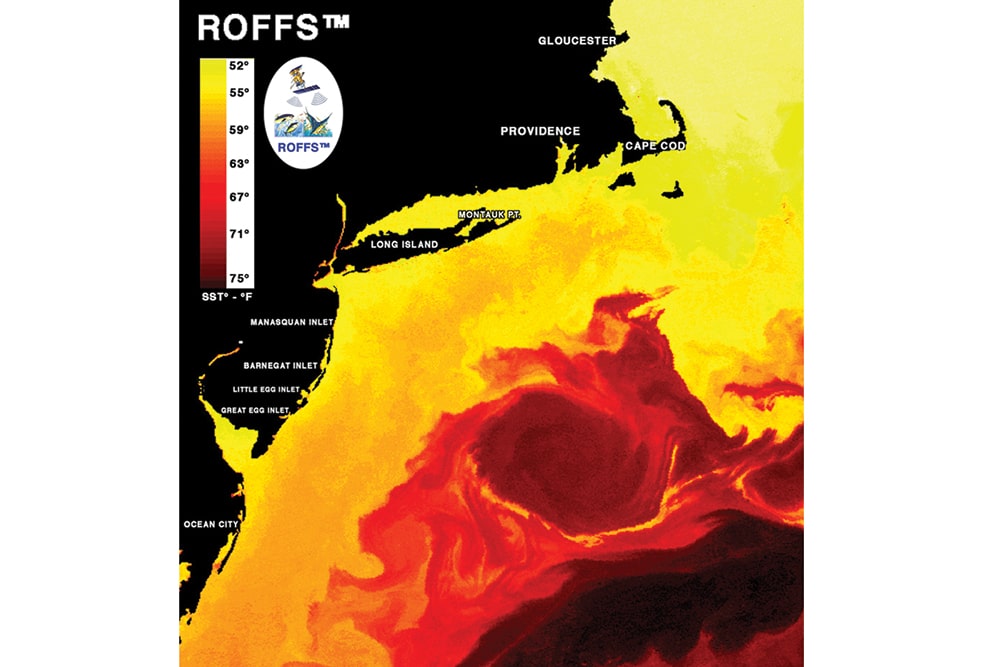
Long Island Blues
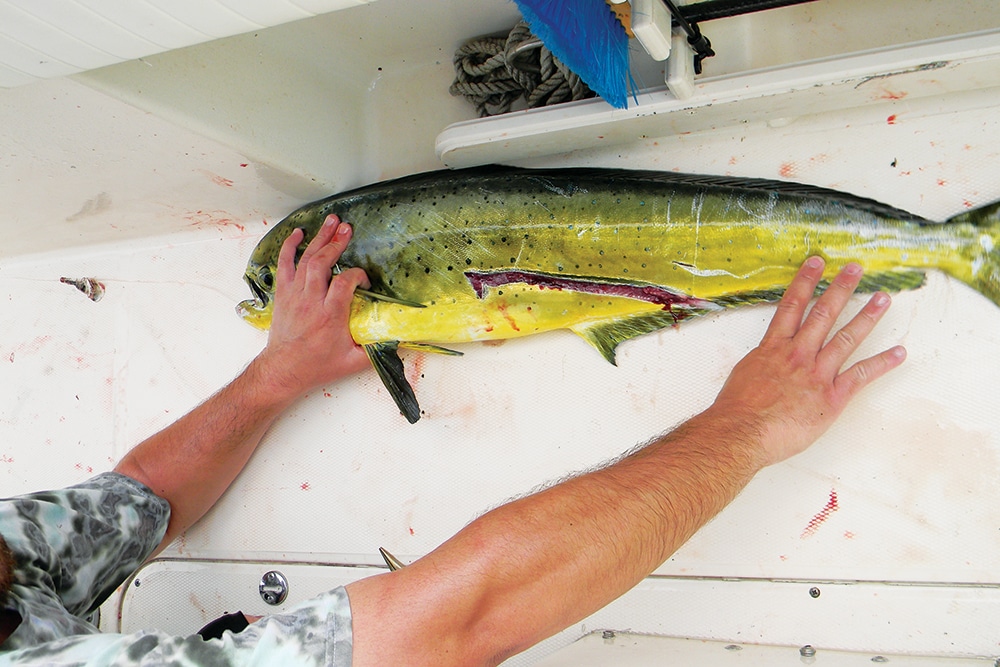
Long Island Blues
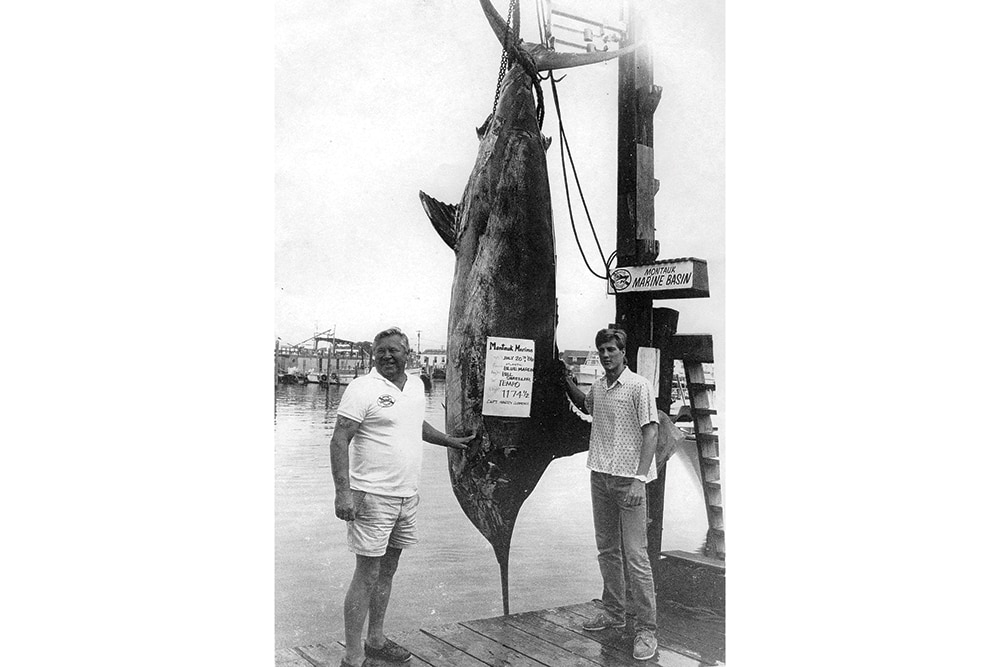
Long Island Blues
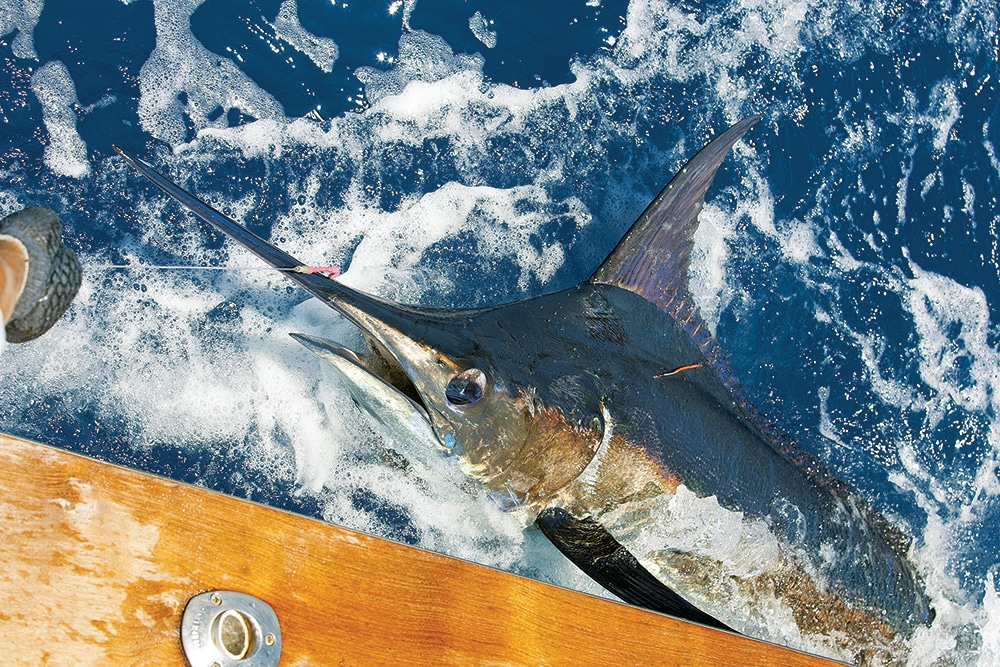
Long Island Blues
